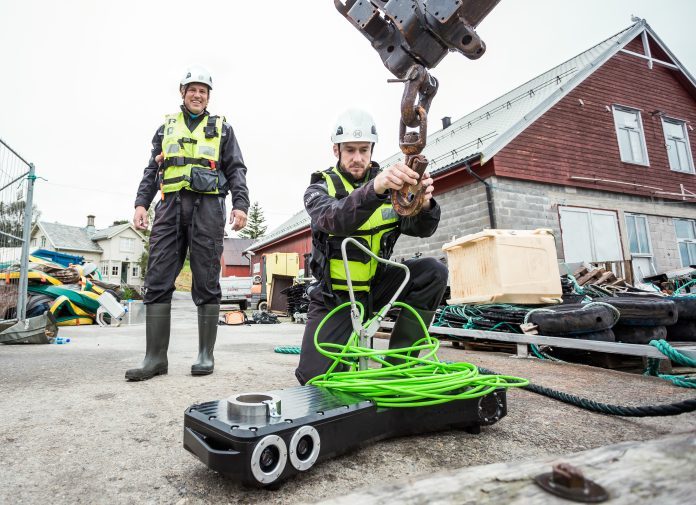He’s an excile in Trondheim from the Island of Karmoy. Recently, civil engineer and entrepreneur Sven J. Kolstoe, 30, could start basking in the glory of newspaper Addresseavisen’s list, “You’ll hear more about these companies in 2018.”
The reason for this is that the company he leads, OptoScale — after working on development for a year-and-a-half — has now begun to compare results. Things look pretty good.
The Trondheim outfit makes meters that estimate fish biomass, and they’ve developed a unique technology based on structured light. The tech makes it easier to see the fish’s silhouette and thickness than with a camera.

Growth cycle
OptoScale has tested equipment at SalMar for about 18 months at five different sites. Biomass readings are especially important for two reasons: you can follow fish growth, and you can relay correct weights to your processing plant.
“We have now finally begun to obtain proper test of pens where equipment has been tested for longer periods, where fish have been processed afterwards. We’ve seen that the technology works well the whole way, but without the precise answer offered by processing, you never know how well it works,” Kolstoe told SalmonBusiness.
Surprise
“I was a little surprised when I saw just how close we can come to the answer. We had a 0.4 percent deviation from the average weight (measured) at one (process) facility, and a 0.46 percent deviation at the other. That I believe most people who have tried to relay (harvesting volume) would say is well within the limits,” he said.
“The goal in the coming year is first and foremost to meaningfully deliver a deviation of less than one person on average weight together with a correct (biomass) weight distribution. When we manage that, we’ll be truly satisfied with 2018,” the entrepreneurial engineers said.

On expectations
“It feels unbelievably good to finally deliver on the expectations that have built up by various innovation prizes and attention. That’s what this is about in the end, whether you deliver or not. And we’re more and more sure that we will. We’re now about to enter our first commercial agreements and we would love to talk to interested customers.”
The company has six staff: two Ph.Ds and four civil engineers.
“Many have helped us along the way, and would really like to thank both (the start-up fund) Innovasjon Norge and Research Council of Norway for being an important part of making this happen. In addition, we have had experienced investors via CoFounder and Investitude since Day 1, something that has helped us grow quickly,” Kolstoe emphasized.

